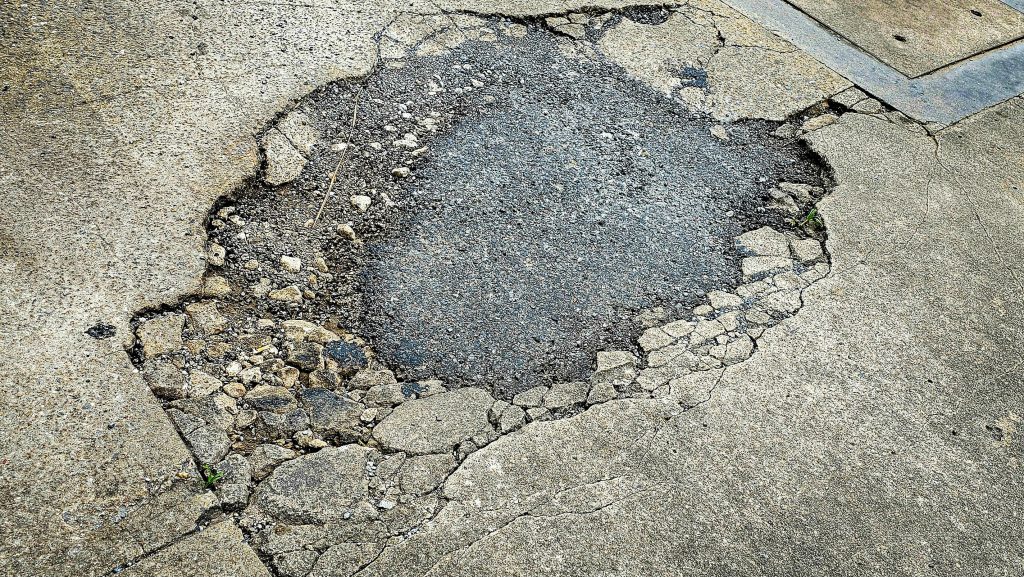
Asphalt is a robust and long-lasting material, capable of withstanding heavy foot and vehicle traffic, harsh weather conditions, oxidation, and more. With routine preventive maintenance like sealcoating, asphalt surfaces can enjoy a lifespan of 15 to 20 years. However, even the most well-maintained driveways and parking lots will eventually show signs of wear and tear that go beyond what a simple sealcoat can fix. Here are some key indicators that it’s time to consider repaving your asphalt surface.
1. Extensive Cracking
Cracks in asphalt are inevitable but manageable with timely maintenance. However, when cracking becomes extensive, it’s a clear sign that the underlying structure of your asphalt is compromised. There are different types of cracks to watch out for:
- Alligator Cracking: This type of cracking looks like the skin of an alligator and occurs due to structural failures. It often indicates that the base layers of your asphalt have deteriorated.
- Edge Cracks: These form along the outer edges of the pavement, often as a result of poor drainage or a lack of support on the sides. When these cracks spread extensively, repaving may be necessary.
- Linear Cracks: While single, manageable linear cracks can be repaired, numerous or widened linear cracks suggest significant aging and degradation.
2. Potholes
Potholes are not just an eyesore; they can pose serious safety hazards. They occur when water penetrates the pavement and weakens the underlying soil, leading to collapses under the weight of traffic. When potholes become frequent and large, spot repairs alone are insufficient. Repaving the surface will ensure a smooth, safe driving experience and prevent further damage.
3. Drainage Problems
Effective drainage is critical to maintaining the integrity of asphalt surfaces. If you notice standing water or poor drainage after rain, this could be a red flag. Water that pools on the surface can seep into the asphalt layers, weakening the foundation and leading to cracks and potholes. In severe cases, fixing the drainage issues may require repaving to restore proper slope and grade.
4. Fading and Surface Erosion
Oxidation and UV exposure cause asphalt to fade from rich black to a dull gray. Over time, this also results in surface erosion where the top layer of asphalt becomes brittle and prone to cracking. If the surface erosion is widespread, sealcoating alone won’t be enough to restore the appearance and durability. A fresh layer of asphalt may be necessary to rejuvenate the surface.
5. Warping and Buckling
Warping and buckling can occur due to heavy loads or subbase issues. If your asphalt appears wavy or has noticeable depressions, it’s an indication that the foundational support is failing. Repaving will address the root cause of these issues, ensuring a stable and even surface.
6. Age
Finally, consider the age of your asphalt. If your driveway or parking lot is approaching or has exceeded the 15 to 20-year mark, it’s likely reaching the end of its functional lifespan. Even with diligent maintenance, the materials naturally degrade over time, making repaving a smart investment for long-term durability.
When to Call the Experts
If you’re noticing any of these signs, it’s time to call in the professionals at Baughman Magic Seal. Our team of experienced technicians can assess the condition of your asphalt and provide expert recommendations on whether sealcoating, repairs, or full repaving is necessary. Investing in timely repaving will not only enhance the appearance of your property but also ensure the safety and longevity of your asphalt surface.
Don’t wait until small issues become major problems. Contact Baughman Magic Seal today to schedule an assessment and keep your asphalt in top condition for years to come.
